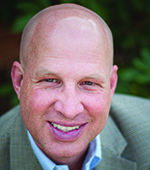By John Chandler
 During Singapore’s recent World Cities Summit, National Geographic’s Jeremy Bentham opined on some of the megatrends of ascending urban migration. Noting that the United Nations projects that the world’s population will grow from roughly seven billion today to nine billion by 2050 (the equivalent of 1.4 million people every week), he highlights that the number of people living in cities is expected to rise from 3.6 billion in 2010 to 6.3 billion in the same period. The greatest increases will be in China, India, the United States and sub-Saharan Africa.
During Singapore’s recent World Cities Summit, National Geographic’s Jeremy Bentham opined on some of the megatrends of ascending urban migration. Noting that the United Nations projects that the world’s population will grow from roughly seven billion today to nine billion by 2050 (the equivalent of 1.4 million people every week), he highlights that the number of people living in cities is expected to rise from 3.6 billion in 2010 to 6.3 billion in the same period. The greatest increases will be in China, India, the United States and sub-Saharan Africa.
Bentham’s angle is that many of these burgeoning cities are not yet on our radar. For instance, of China’s largest 130 cities, more than half are still in the early stages of development. Urban planning of the largest cities, then, will be critical for their impact on the entire globe. They will use the vast majority of natural and human resources, and are thus a matter of interest for all of us, whether we live in those cities or not.
Even today, in my current commonwealth of Virginia, two-thirds of the population lives near the axis of Interstate 95 from Washington to Richmond and the Interstate 64 corridor from Richmond to Virginia Beach. What happens in Virginia when population in those areas rises to 80 percent? And, from the vantage point of those of us in communities and churches not in these urban corridors, why should we care and what should we think? I live in Fluvanna County — we have one stop light in our entire county, for heaven’s sake. What does urbanization have to do with me?!
Well, if God so loved the cosmos that he gave his only begotten Son, then it better matter to me. Forget the old saw that “all politics is local” — I have to adjust to the idea that all politics is global. And so is all of congregational life. Unless we view church as a haven and retreat from the world — and I most assuredly think that is far from the worldview of Jesus — then our churches will have to learn to think in terms of how we reach a world very different from ours. Including the world next door. Including cities. Does your congregation have a strategy for reaching large urban areas? This may be the strongest reason for collaborating within a larger denominational tribe in years to come.
What does Fluvanna have to do with D.C.? Turns out, quite a bit.
